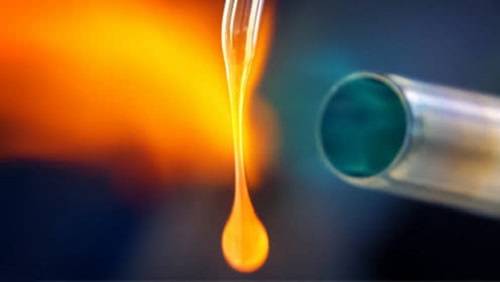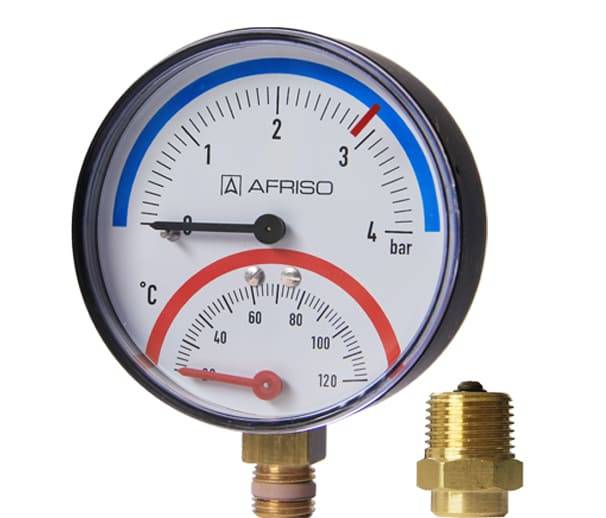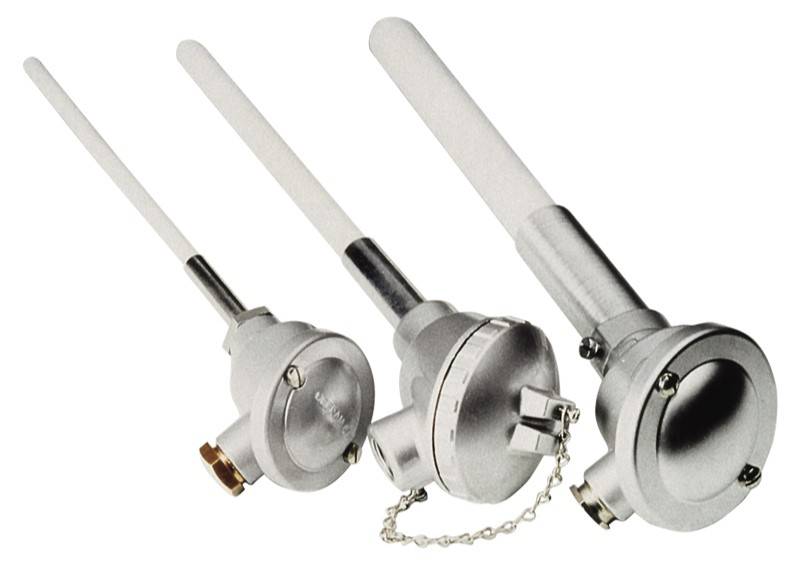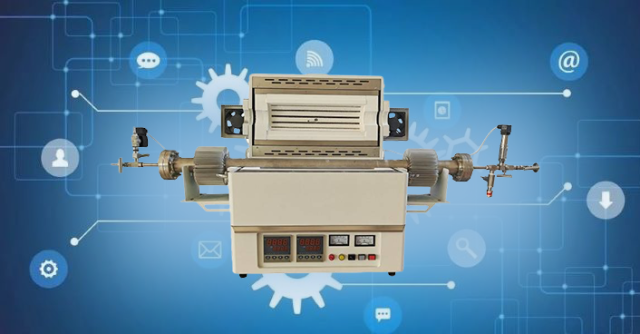Introduction to High Pressure Tube Furnaces
High pressure tube furnaces are pivotal in high-temperature applications, designed to withstand and facilitate complex processes. These advanced systems are engineered to meet the rigorous demands of industries ranging from materials science to glass manufacturing. This article delves into the multifaceted world of high pressure tube furnaces, exploring their design, common uses, and the critical roles they play in various high-temperature processes. We will also discuss essential safety measures, maintenance tips, and the latest technological advancements, providing a comprehensive guide to understanding and optimizing the performance of these vital industrial tools.
Applications of High Pressure Tube Furnaces
High pressure tube furnaces are specialized pieces of equipment that are designed to operate under extreme conditions, providing high temperatures and controlled atmospheres for a variety of scientific and industrial applications. These furnaces are particularly useful in materials science, metallurgy, and ceramics industries, where precise control over temperature and pressure is crucial for the processing of advanced materials.
Sintering
One of the primary applications of high pressure tube furnaces is sintering, a process used to create objects from powder by heating the material to just below its melting point under high pressure. This technique is widely used in the production of ceramics, metals, and composites. Sintering in high pressure tube furnaces allows for the creation of dense, strong, and uniform products with tailored properties. For instance, the sintering of tungsten carbide, a material used in cutting tools and wear-resistant parts, requires temperatures up to 2000°C and pressures that can exceed 200 MPa. High pressure sintering not only enhances the density and hardness of the final product but also reduces processing time and energy consumption.
Glass Melting
High pressure tube furnaces are also employed in the glass industry for melting and refining glass compositions. The high temperatures and controlled atmospheres provided by these furnaces allow for the precise melting and homogenization of complex glass formulations. This is particularly important in the production of specialty glasses, such as those used in electronics, optics, and advanced ceramics. The ability to maintain high pressures during the melting process can also help in removing bubbles and other impurities from the glass, resulting in a higher quality final product.

High-Temperature Testing of Materials
Another critical application of high pressure tube furnaces is in the high-temperature testing of materials. This includes the evaluation of the mechanical, chemical, and thermal properties of materials under extreme conditions. Such tests are essential for the development of new materials and for ensuring the reliability and safety of materials used in high-temperature applications, such as aerospace components, nuclear reactors, and advanced energy systems. High pressure tube furnaces enable researchers to simulate real-world conditions and to study the behavior of materials under load, corrosion, and thermal shock.
Advanced Materials Processing
High pressure tube furnaces play a pivotal role in the processing of advanced materials, including ceramics, composites, and alloys. These furnaces are used in processes such as hot isostatic pressing (HIP), which involves heating a material under high pressure to improve its density and mechanical properties. HIP is particularly useful for consolidating powder metallurgy products and for repairing defects in castings. Additionally, high pressure tube furnaces are used in the synthesis of novel materials, such as high-temperature superconductors and nanomaterials, where precise control over temperature and pressure is critical for achieving desired properties.
In conclusion, high pressure tube furnaces are indispensable tools in the field of materials science and engineering. Their ability to provide high temperatures and controlled atmospheres makes them suitable for a wide range of applications, from sintering and glass melting to high-temperature testing and advanced materials processing. As technology continues to advance, the role of high pressure tube furnaces in the development of new materials and technologies is likely to expand, further solidifying their importance in both research and industrial settings.
Safety Measures in High Pressure Tube Furnaces
High pressure tube furnaces are critical equipment in various industrial processes, particularly in materials science and chemical industries. These furnaces operate under high temperatures and pressures, making safety measures paramount. This section discusses essential safety measures such as pressure regulation, temperature control, and handling of hazardous gases.
Pressure Regulation
Pressure regulation in high pressure tube furnaces is crucial to ensure safe operation. The furnace must be equipped with a reliable gas backfill valve, such as a standard ASCO-type valve, to manage gas flow and pressure. Proper control of partial pressure is essential, especially in processes that require precise control from 500 Microns Hg to 10 Torr. For processes involving high temperatures over 1800°F, control above 1 Torr is necessary to minimize evaporation of materials like chrome and copper.
When supplying nitrogen protective gas, several precautions must be taken:
- The air pressure inside the furnace tube should not exceed 0.02 MPa.
- A pressure reducing valve must be installed on the gas cylinder to regulate the pressure within a safe range of 0.01 MPa to 0.1 MPa.
- At temperatures above 1500°C, the furnace tube should not be in a vacuum state; it must maintain atmospheric pressure.
- The gas flow into the furnace tube should be limited to less than 200 SCCM to prevent the impact of cold atmospheric flow on the heated corundum tube.
- The long-term use temperature of the corundum tube should be below 1750°C.
- During sample heating experiments, it is not recommended to close the exhaust and air inlet valves at the flange end. If necessary, monitor the pressure gauge closely, and if the air pressure exceeds 0.02 MPa, open the relief valve immediately to prevent accidents.

Temperature Control
Temperature control is another critical aspect of safety in high pressure tube furnaces. These furnaces can reach extremely high temperatures, and maintaining precise control is essential to prevent overheating and potential hazards. Advanced computer controls are now standard in many furnaces, allowing for real-time monitoring and adjustment of temperature settings across multiple systems.
Water cooling requirements are also important to consider. The furnace and supporting piping should include pressure regulators and water flow sight indicators on all critical lines to ensure adequate cooling during heating and cooling cycles. Proper water flow rates are necessary to prevent thermal stress and ensure the longevity of the furnace components.
Handling Hazardous Gases
Handling hazardous gases safely is a key concern in high pressure tube furnaces. Furnaces must be designed to prevent leaks and ensure proper ventilation. Regular maintenance is essential to check gas lines for leaks or blockages. Operators should follow proper safety procedures and use appropriate personal protective equipment, such as heat-resistant gloves and eye protection.
Maintenance and Safety
Regular maintenance is crucial to ensure the furnace operates at peak performance and minimizes downtime. This includes cleaning the furnace chamber, replacing heating elements or thermocouples, and checking gas lines for leaks or blockages. Safety procedures should be followed rigorously, including proper ventilation of the furnace chamber and appropriate shutdown procedures.
In conclusion, high pressure tube furnaces require careful attention to pressure regulation, temperature control, and handling of hazardous gases. By implementing these safety measures and maintaining regular maintenance, operators can ensure the safe and efficient operation of these critical pieces of equipment.
Maintenance and Operational Tips
Maintaining high pressure tube furnaces is crucial for ensuring their longevity, efficiency, and safety. This section provides comprehensive guidelines on maintaining these furnaces, focusing on gas flow management, temperature monitoring, and periodic inspections.
Gas Flow Management
High pressure tube furnaces often operate with protective gases such as nitrogen to prevent oxidation and other chemical reactions within the furnace. Proper management of gas flow is essential for safe and effective operation.
-
Pressure Control: The internal pressure of the furnace tube should not exceed 0.02 MPa. This prevents overpressure situations that could lead to equipment damage or safety hazards.
-
Pressure Reduction: When introducing gas from a high-pressure cylinder, always use a pressure reducing valve set between 0.01 MPa and 0.1 MPa. This ensures a controlled and safe flow of gas into the furnace.
-
Temperature and Pressure Relationship: At temperatures above 1500°C, the furnace tube should not be in a vacuum state. Maintain atmospheric pressure inside the tube to prevent structural damage to the furnace components.
-
Gas Flow Rate: The flow rate of the gas entering the furnace should be less than 200 SCCM (Standard Cubic Centimeters per Minute). This minimizes the impact of cold gas flow on the heated components of the furnace.
-
Temperature Limitations: The long-term use temperature for components like the corundum tube should not exceed 1750°C to prevent degradation and potential failure.
-
Safety Precautions: During sample heating experiments, avoid closing both the exhaust and inlet valves at the flange end. Monitor the pressure gauge closely, and if the pressure exceeds 0.02 MPa, immediately open the relief valve to prevent accidents such as tube rupture or flange ejection.
Temperature Monitoring
Accurate temperature monitoring is critical for maintaining the integrity of both the furnace and the materials being processed.
-
Thermocouple Replacement: Replace thermocouples annually as they can degrade over time, leading to inaccurate temperature readings. This ensures that the actual furnace temperature matches the setpoint, preventing overheating and potential damage to heating elements and refractory materials.
-
Temperature Setpoints: Regularly review and adjust temperature setpoints based on actual performance data. This helps in maintaining optimal furnace operation and prevents unnecessary strain on the furnace components.

Periodic Inspections
Regular inspections are essential for identifying and addressing potential issues before they escalate.
-
Monthly Inspections: Inspect the interior of the furnace for signs of wear such as cracking, sagging, or pin failures. Replace any damaged components promptly to prevent further deterioration.
-
Annual Maintenance: Along with thermocouple replacement, inspect and replace seals on water-cooled tube end caps and air-cooled load platform seals. This ensures that the furnace maintains its operational integrity and safety.
-
Long-Term Maintenance: Every 3-5 years, inspect the furnace insulation for deterioration. Review setpoint versus actual temperature data to ensure the furnace can reach and maintain required temperatures. Replace high-temperature insulation tube plugs as needed.
-
Heating Elements: Heating elements should be replaced only when they fail. It is often possible to replace individual elements rather than the entire set, which can be more cost-effective.
-
Electrical Components: Inspect and replace bus bars, element holders, and straps as needed. Look for signs of pitting, fraying, or damage that could lead to arcing or loss of elements.
By adhering to these maintenance and operational tips, you can ensure that your high pressure tube furnace operates efficiently, safely, and reliably, providing consistent results and extending its service life.
Advanced Features and Technologies
Vacuum furnaces have become a cornerstone in advanced manufacturing and materials processing, particularly in industries requiring high precision and control over thermal environments. These furnaces operate in a vacuum environment, which allows for unique heat treatment capabilities that are not achievable with conventional atmospheric furnaces. The advanced features of vacuum furnaces, such as rapid thermal treatment, vacuum capabilities, and rotary structures, have significantly expanded their applications and benefits.
Rapid Thermal Treatment (RTP)
Rapid Thermal Treatment (RTP) is a critical feature of modern vacuum furnaces, enabling quick heating and cooling cycles. This capability is essential for processes like annealing and tempering, where rapid changes in temperature can enhance the mechanical properties of materials. RTP furnaces can heat materials from room temperature to over 1000°C in just a few minutes, which is crucial for maintaining the structural integrity and homogeneity of the materials being treated. This rapid heating and cooling process also reduces the time required for heat treatment, thereby increasing productivity and reducing energy consumption.
Vacuum Capabilities
The vacuum environment provided by vacuum furnaces is a significant advantage over atmospheric furnaces. It allows for precise control over the atmosphere, eliminating the risk of oxidation and contamination. This is particularly important in industries such as aerospace and electronics, where even minor surface imperfections can lead to significant performance issues. Vacuum furnaces can achieve pressures as low as 10^-6 torr, which is essential for processes like brazing, sintering, and heat treatment of reactive metals like titanium and zirconium. The absence of oxygen in the vacuum environment also enables the use of lower temperatures for certain processes, which can help in preserving the microstructure and mechanical properties of the materials.
Rotary Structures
Rotary structures in vacuum furnaces are designed to enhance the uniformity of heat treatment by rotating the furnace tube or the sample. This rotation ensures that the heat is evenly distributed across the sample, leading to consistent results and improved product quality. Rotary tube furnaces are particularly useful for treating powders and granular materials, where uniform heating is critical to prevent agglomeration and ensure homogeneous reactions. The rotating structure also aids in the uniform coating of powders, which is essential in applications like the production of advanced ceramics and coatings.
Applications in Industry

The advanced features of vacuum furnaces have made them indispensable in various industries. In the aerospace sector, vacuum furnaces are used for heat treating high-strength alloys and composites, ensuring they meet the stringent requirements for durability and reliability. In the automotive industry, vacuum furnaces are used for processes like brazing and sintering, which are crucial for manufacturing lightweight and high-performance components. The medical industry also benefits from vacuum furnaces, particularly in the production of implants and surgical instruments, where high precision and cleanliness are paramount.
Conclusion
Vacuum furnaces, with their advanced features like rapid thermal treatment, vacuum capabilities, and rotary structures, have revolutionized the field of heat treatment. These technologies provide unparalleled control and precision, enabling industries to produce high-quality materials and components that meet the demanding requirements of modern applications. As technology continues to advance, the role of vacuum furnaces in advanced manufacturing and materials processing is only expected to grow, further solidifying their position as a critical tool in various industries.
Future Trends and Innovations
The field of high pressure tube furnaces is poised for significant advancements driven by technological innovations and emerging trends. These developments are set to enhance the capabilities of furnaces, making them more efficient, versatile, and capable of handling higher temperatures and pressures. Here, we explore the future trends and innovations that are expected to shape the industry.
Advancements in Material Science
One of the most promising areas of innovation in high pressure tube furnaces is the development of advanced materials. Traditional materials like alumina tubes, while effective, are subject to thermal shock and have limitations at ultra-high temperatures. Future furnaces are likely to incorporate materials such as graphite, refractory metals, and novel ceramics that can withstand temperatures well over 2000°C. These materials offer better thermal stability and resistance to thermal shock, enabling more robust and reliable high-temperature processes.
Enhanced Control Systems
The integration of advanced control systems is another significant trend. Modern furnaces are increasingly equipped with sophisticated computer controls that monitor and manage various parameters in real-time. These systems allow for precise control over temperature, pressure, and atmosphere, ensuring consistent and high-quality outcomes. Future innovations in control systems will likely include AI and machine learning algorithms that can predict and adjust to process variations, further enhancing efficiency and reducing downtime.

Multi-Atmosphere Capabilities
The ability to control multiple atmospheres within a single tube is a groundbreaking innovation. This feature eliminates the need for multiple unit operations, streamlining the process and reducing operational costs. Future furnaces will likely offer even more advanced multi-atmosphere control, allowing for the simultaneous use of different gases and atmospheres, tailored to specific process requirements.
Pressure Vessel Design Innovations
Pressure vessel designs are evolving to meet the demands for increased cycle life, higher pressure processing, and enhanced safety. New furnace designs and materials, such as molybdenum, steel, and graphite, are being developed to expand the temperature and pressure parameters of the process. These innovations not only improve the performance of the furnaces but also ensure compliance with evolving regulatory standards.
Vertical and Horizontal Configurations
The development of versatile furnace configurations, such as vertical and horizontal tube models, is another trend. These configurations offer flexibility in process setup and operation, allowing for optimal use of space and efficient heat distribution. Future innovations in this area may include modular designs that can be easily reconfigured to suit different applications, enhancing the versatility of high pressure tube furnaces.
Integration with Additive Manufacturing
The synergy between high pressure tube furnaces and additive manufacturing is an emerging trend with significant potential. The ability to sinter and cure materials at high temperatures and pressures is crucial for advanced manufacturing processes. Future innovations in this area will likely focus on integrating furnace technology with 3D printing systems, enabling the production of complex, high-performance components with precise material properties.
Environmental and Energy Efficiency
Environmental sustainability and energy efficiency are increasingly important considerations in the design and operation of high pressure tube furnaces. Future innovations will likely include more energy-efficient heating elements, improved insulation materials, and advanced heat recovery systems. These enhancements will not only reduce the environmental impact of the furnaces but also lower operational costs, making them more economically viable.
Conclusion
The future of high pressure tube furnaces is bright, with numerous innovations on the horizon that will enhance their capabilities and applications. Advancements in material science, control systems, multi-atmosphere capabilities, pressure vessel design, and integration with additive manufacturing are just a few of the trends that will drive the industry forward. As these innovations are implemented, high pressure tube furnaces will continue to play a crucial role in various industries, enabling new possibilities and pushing the boundaries of what is achievable in high-temperature processing.
Conclusion
In conclusion, high pressure tube furnaces play a pivotal role in modern high-temperature processes, from sintering and glass melting to advanced material testing. Ensuring safety through rigorous measures like pressure regulation and temperature control is crucial. Maintenance practices, including gas flow management and periodic inspections, are essential for optimal performance. As technology advances, features such as rapid thermal treatment and vacuum capabilities enhance efficiency. The integration of these furnaces in various industries underscores their significance, paving the way for future innovations and applications.
Related Products
- High Pressure Laboratory Vacuum Tube Furnace Quartz Tubular Furnace
- 1400℃ Laboratory Quartz Tube Furnace with Alumina Tube Tubular Furnace
- 1700℃ Laboratory Quartz Tube Furnace with Alumina Tube Tubular Furnace
- Vertical Laboratory Quartz Tube Furnace Tubular Furnace
- Multi Zone Laboratory Quartz Tube Furnace Tubular Furnace
Related Articles
- The Breakthrough in a Box: How Vacuum Tube Furnaces Eliminate Contamination in Materials Research
- Installation of Tube Furnace Fitting Tee
- The Silent Partner in Pyrolysis: Engineering the Perfect Thermal Boundary
- Hydrogen Atmosphere Furnaces: Applications, Safety, and Maintenance
- Ultimate Guide to High Pressure Tube Furnaces: Applications, Types, and Benefits





















